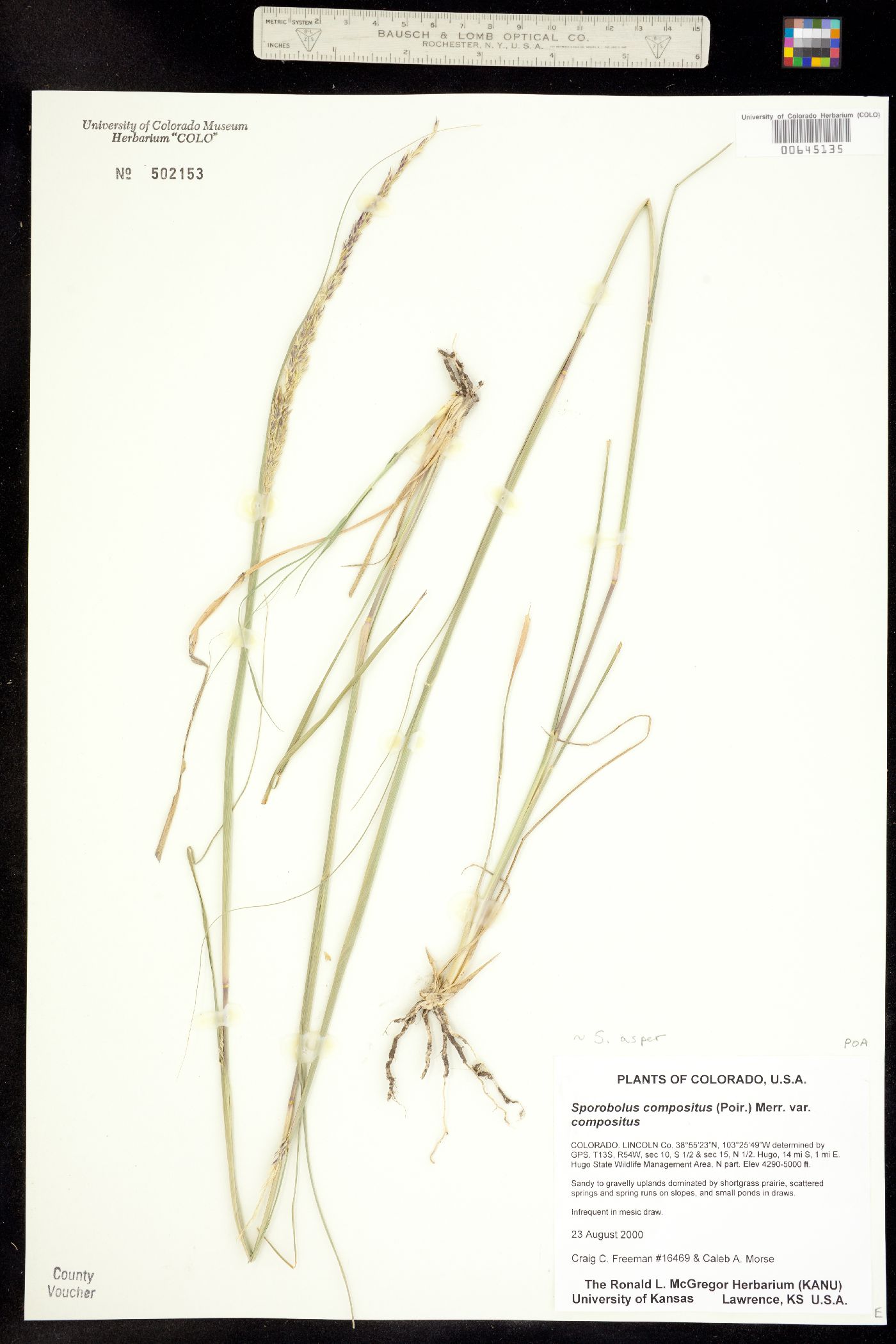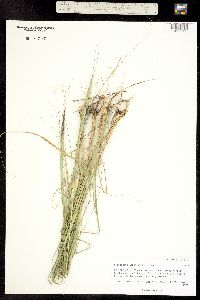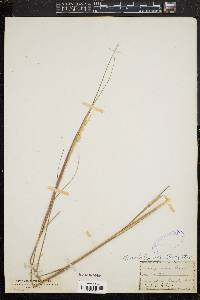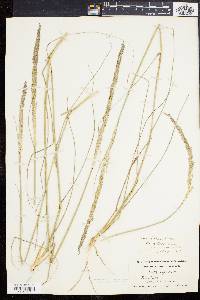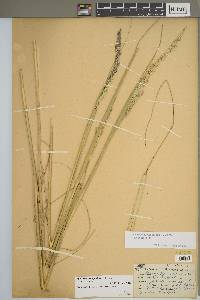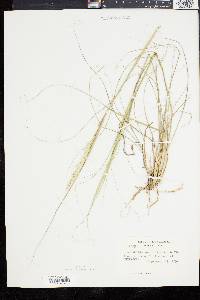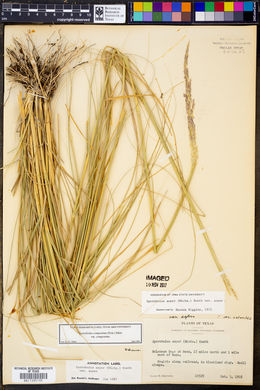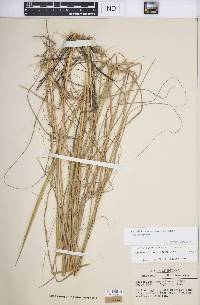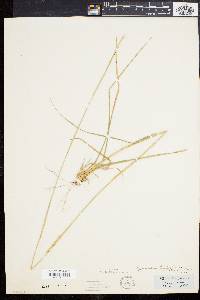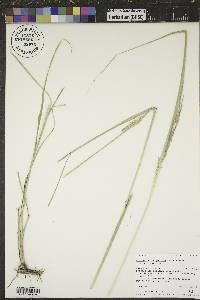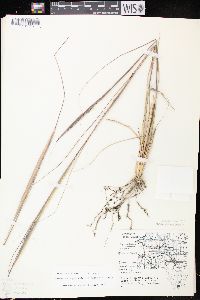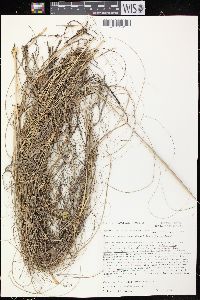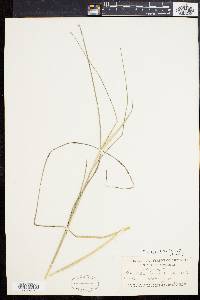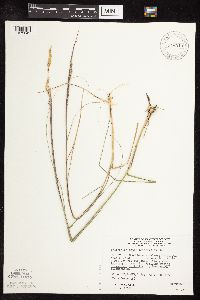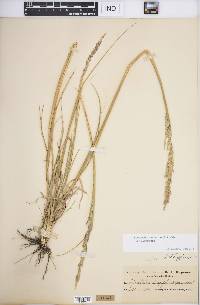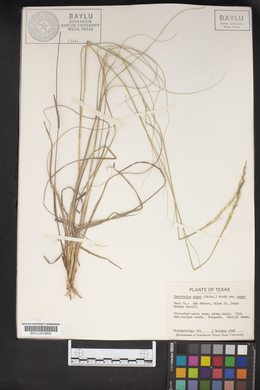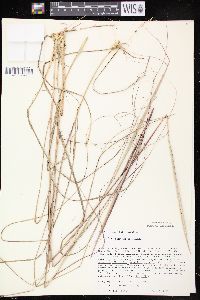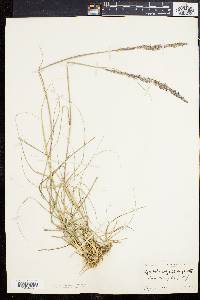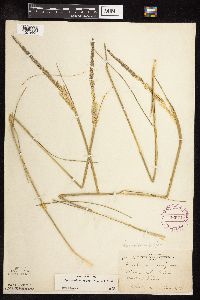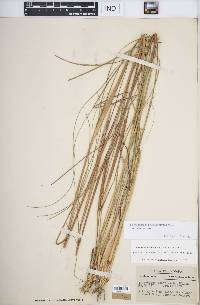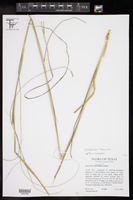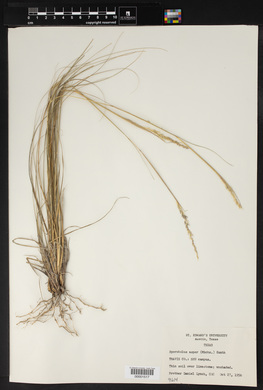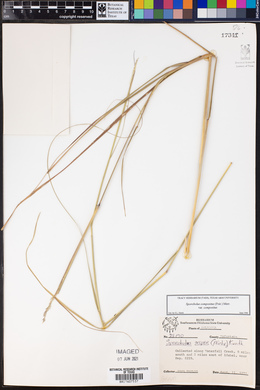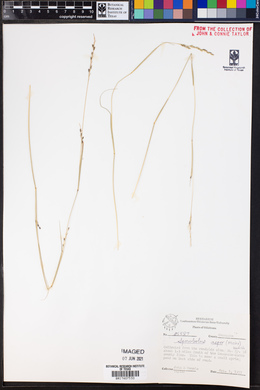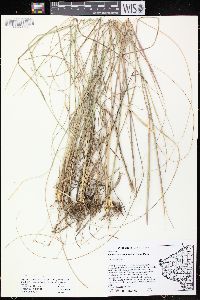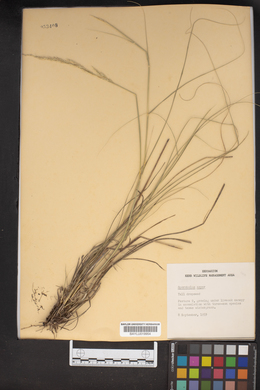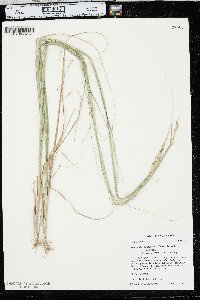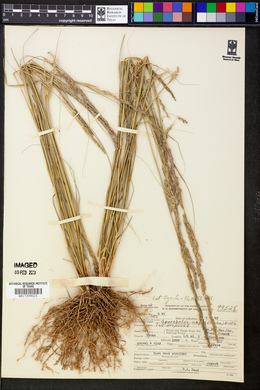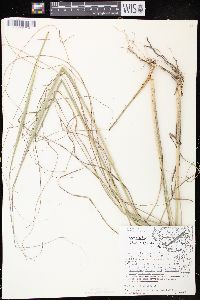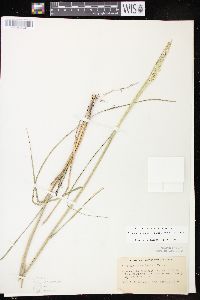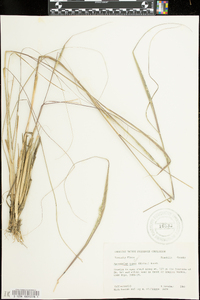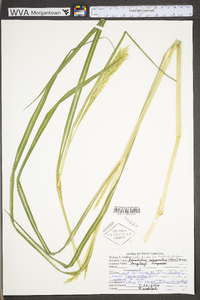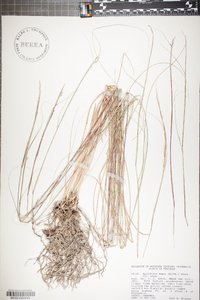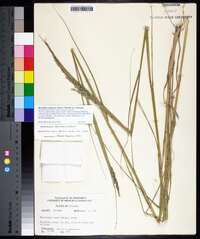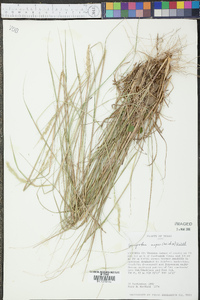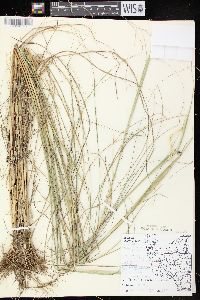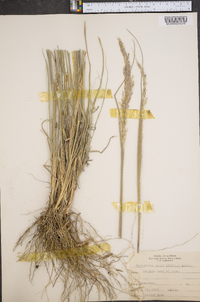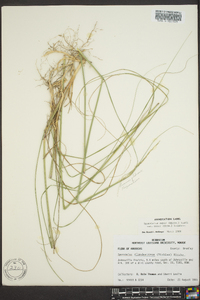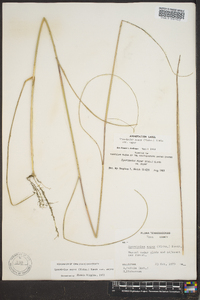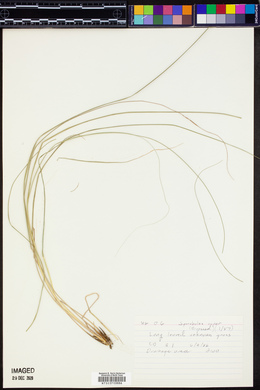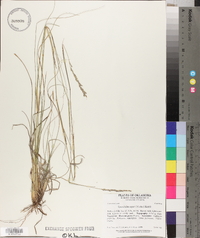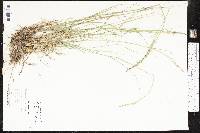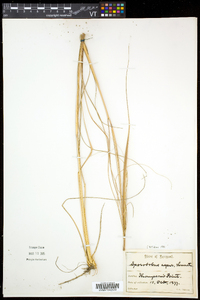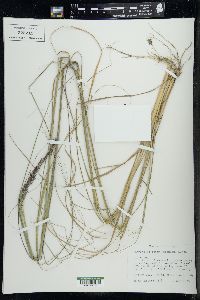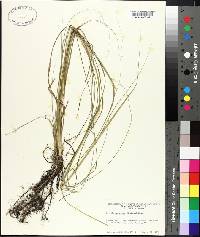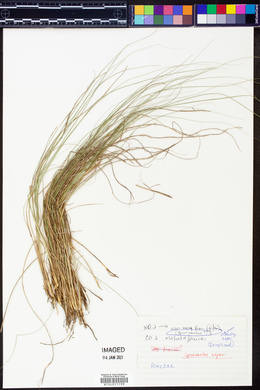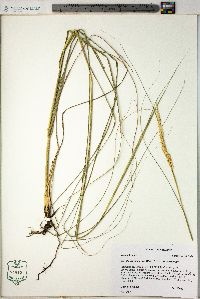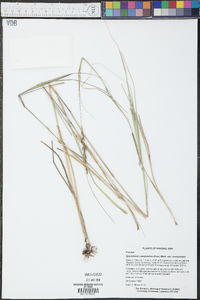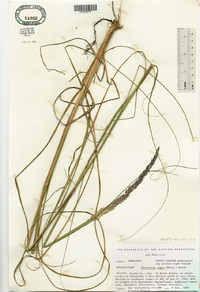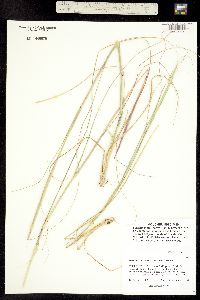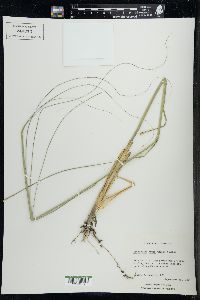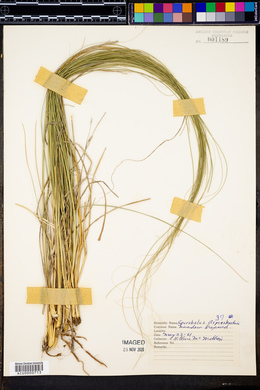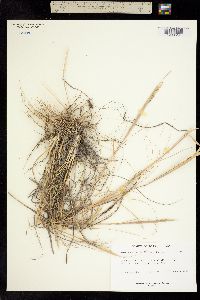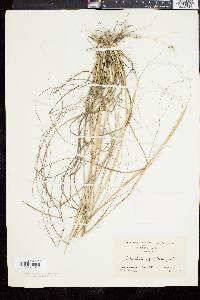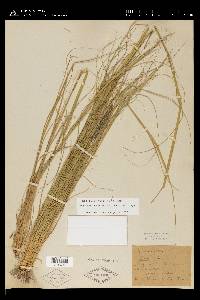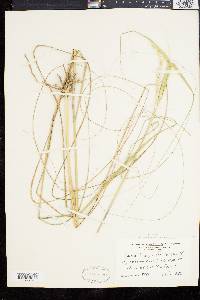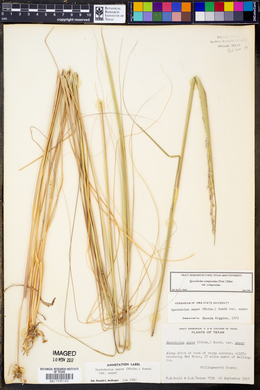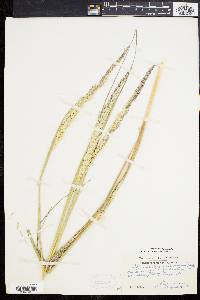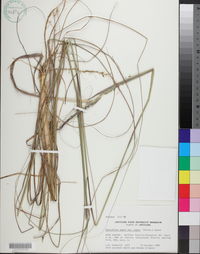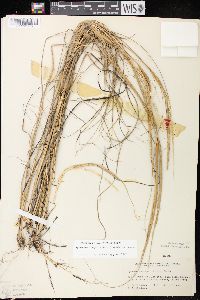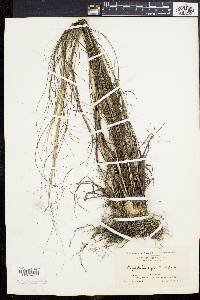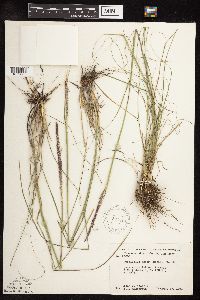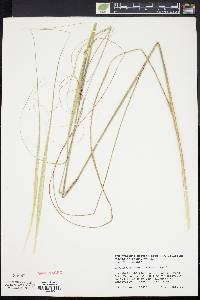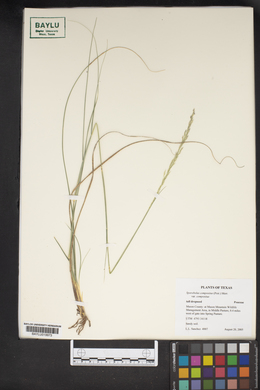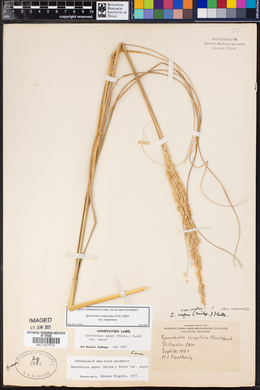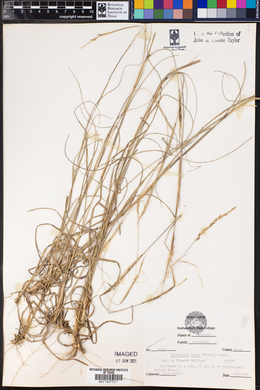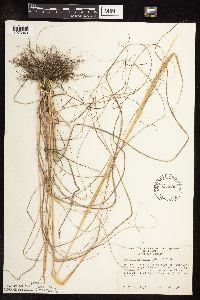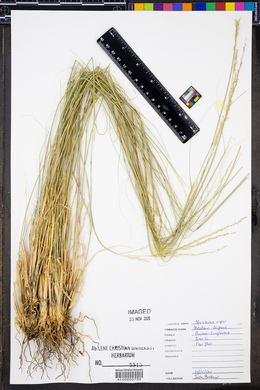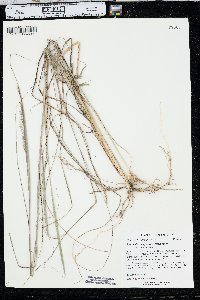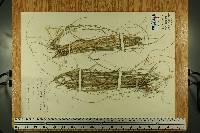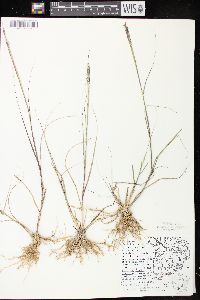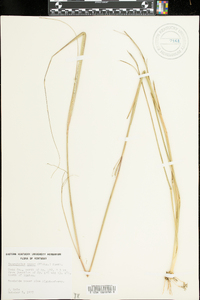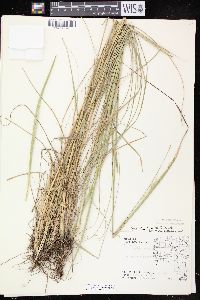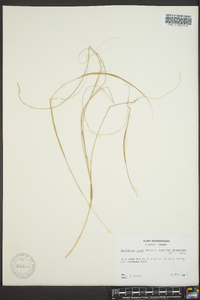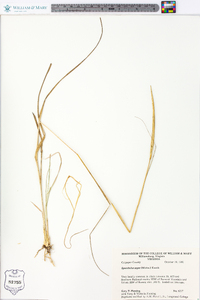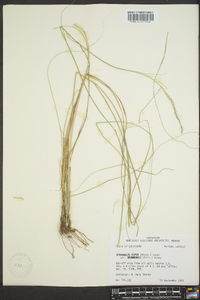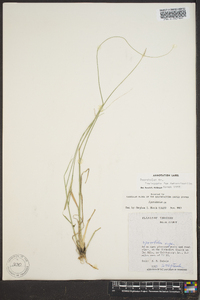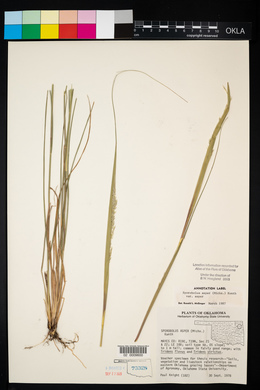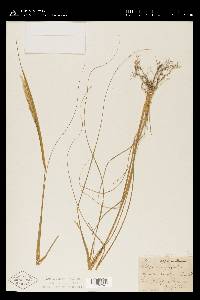
|
|
|
|
Family: Poaceae
Head-Like Dropseed, more...composite dropseed
[Sporobolus asper (Michx.) Kunth, moreSporobolus asper asper , Sporobolus asper var. hookeri (Trin.) Vasey] |
Plants not rhizomatous. Culms stout, 2-5 mm thick. Uppermost sheaths usually 2.6-6 mm wide. Panicles with 30-90 spikelets per cm2 when pressed. Fruits 1-1.8 mm. Sporobolus compositus var. compositus is the most widespread of the three varieties, being found throughout most of the range shown for the species, but not in South Carolina or Florida. Perennial tufted herb, lacking rhizomes 20 cm - 1.8 m tall Leaves: with open sheaths to 6 mm wide and ending in sparsely hairy (to 3 mm long) tips. The ligules are made of hairs 0.1 - 0.5 mm long, and the blades are 5 cm - 0.7 m long, 1.5 - 10 mm wide, flat to folded or with margins rolling toward the upper surface of the midvein (involute), hairless or softly hairy beneath, hairless or minutely rough above, and not conspicuously two-ranked. Inflorescence: terminal, branched and often spike-like (panicle), 5 - 30 cm long, 0.4 - 1.6 cm wide, the base surrounded by the sheath. The appressed primary branches are 0.4 - 6 cm long and bear spikelets to the base, and the swelling in the branch axils (pulvinus) is hairless. Fruit: a reddish-brown caryopsis, 1 - 1.8 mm long, elliptic, flattened laterally, often with fine longitudinal lines. The matured ovary wall (pericarp) becomes gelatinous and slips from the seeds when wet. Culm: stout, 20 cm - 1.5 m long, 2 - 5 mm wide, hairless. Spikelets: 30 to 90 spikelets per square cm, tan to purplish tinged, 4 - 10 mm long, borne on a stalk that is 0.3 - 3.5 mm long, appressed, hairless or minutely rough. Glumes: nearly equal, lance-shaped, membranous to thin but firm (chartaceous), usually having greenish midveins. The lower glume is 1.2 - 4 mm long, and the upper glume is 2 - 6 mm long. Florets: usually one per spikelet, with yellow to orangish anthers 0.2 - 3.2 mm long. Lemma: 2.2 - 10 mm long, lance-shaped with a blunt to pointed tip, transparent, membranous to thin but firm (chartaceous), hairless, sometimes two or three-veined. Palea: 2.2 - 10 mm long, egg-shaped to lance-shaped, hairless, membranous, two-veined, often splitting between veins when mature. Similar species: Sporobolus neglectus and Sporobolus vaginiflorus are annuals that are easily distinguished by their inflated sheaths. The spikelets of Sporobolus cryptandrus are less than 3 mm long. Sporobolus clandestinus has opaque, minutely rough or hairy lemmas and 1.5 - 3.5 mm long caryopses, while Sporobolus heterolepis has open, fragrant inflorescences extending above the uppermost leaf sheaths. Flowering: late August to early October Habitat and ecology: Introduced from the southern United States, this species is locally abundant on railroad right-of-ways and sandy disturbed ground. It is capable of forming nearly solid stands along roads and also grows in calcareous prairies. Occurence in the Chicago region: non-native Etymology: Sporobolus comes from the Greek words sporos, meaning seed, and ballein, meaning "to cast forth." Compositus means compound. Author: The Morton Arboretum Stout, tufted, erect, 4-15 dm, the glabrous culms ±solid, mostly 2-5 mm thick; sheaths glabrous, overlapping, rather sparsely long-pilose at the throat and around the collar; blades elongate, flat, becoming involute, 1-4 mm wide, tapering to a scabrous point, pilose near the base at least on the upper side; panicles 2-6, pale or purplish, dense, cylindric, 10-50 cm, to 1 cm thick, partly or mostly enclosed in the inflated sheaths; first glume 1.7-4.7 mm, the second 2.5-6 mm; lemma glabrous, (3.5-)4-6.5 mm, longer than the second glume, blunt, with a boat-shaped tip; palea about as long as the lemma; anthers (1.5-)2-2.5 mm; pericarp gelatinous when wet; 2n=54, 88, 108. Dry or sandy soil, especially on prairies, sometimes on beaches; Me. and Vt. to N.C., Ky., Tenn., and Ala., w. to N.D., Wash., Utah, and N.M. Nearly all of our plants are var. asper, as principally described above. The chiefly southwestern var. drummondi (Trin.) Vasey reaches its nw. limits in Mo. and Io. It has more slender culms, 1-2 mm thick, and a somewhat laxer, looser infl with 16-36 spikelets per square cm of surface, instead of 30-75+ as in var. asper. Gleason, Henry A. & Cronquist, Arthur J. 1991. Manual of vascular plants of northeastern United States and adjacent Canada. lxxv + 910 pp. ©The New York Botanical Garden. All rights reserved. Used by permission. From Flora of Indiana (1940) by Charles C. Deam This species is infrequent throughout the state. It is doubtful that this species is a native. I have noted its advent into the state during the past few years. It now often forms complete stands for rods along railroads, highways, and adjacent fields. It will no doubt, in time, become a weed. …… Indiana Coefficient of Conservatism: C = 1 Wetland Indicator Status: N/A |

